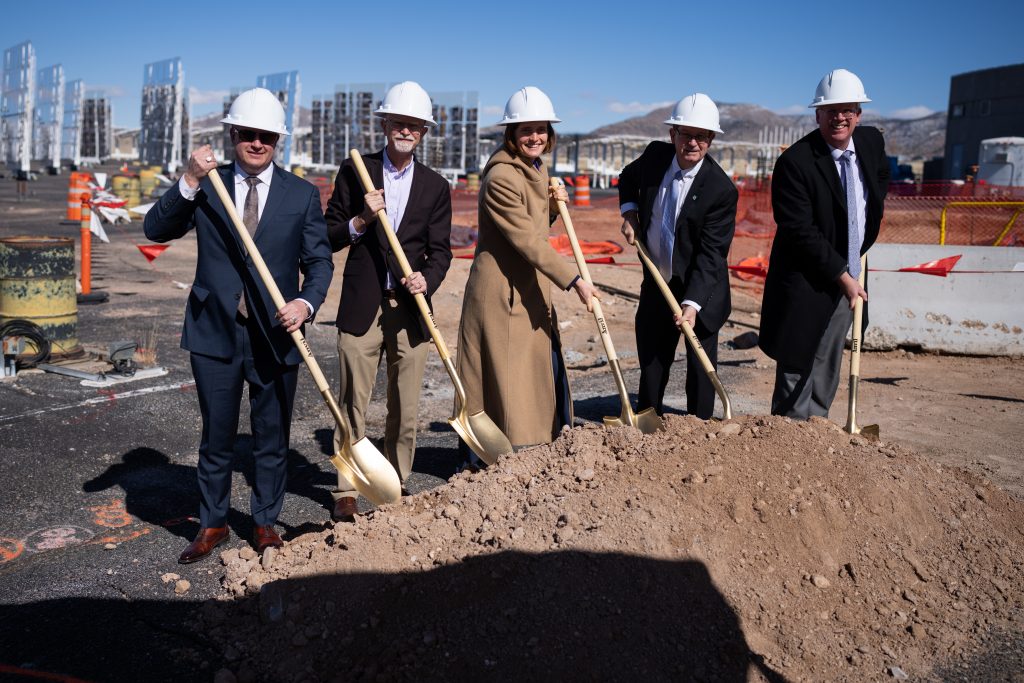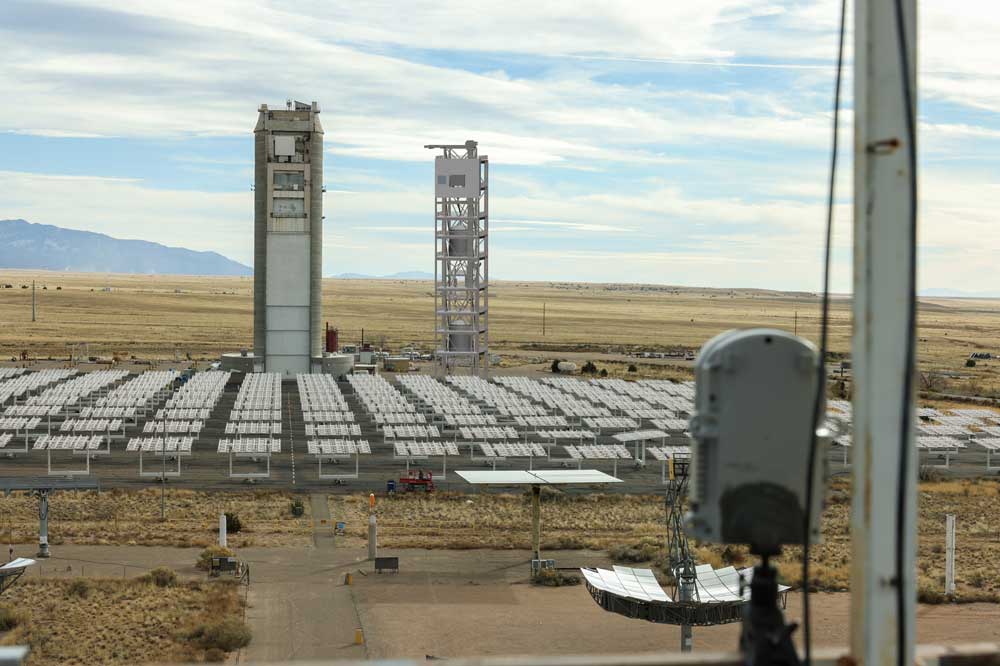
Sandia hosted a Feb. 16 groundbreaking ceremony to begin the construction of a new solar tower at the National Solar Thermal Test Facility. The tower is part of the $25 million award announced by the DOE to include the building, testing and demonstration of a next-generation concentrating solar thermal power plant.
The project is part of DOE’s effort to develop concentrating solar power technology that may provide clean, utility-scale electricity. The knowledge gained through this research will help address the country’s climate goals of 100% carbon-pollution-free electricity by 2035 and net-zero emissions by 2050.
“Proof of this new CSP technology could be an important piece in how we advance climate security, both globally and locally,” Associate Laboratories Director Andy McIlroy said.
Current concentrating solar power technology uses mirrors to gather the sun’s rays and heat molten salt, reaching a maximum of 1,049 degrees Fahrenheit (565 degrees Celsius). Based on research findings from emerging technologies, DOE chose Sandia to develop a technology using the existing thermal test facility’s field of heliostats to concentrate sunlight toward a particle receiver that will heat a curtain of flowing sandlike particles.
The proposed multimegawatt Generation 3 Particle Pilot Plant system will enable at least six hours of particle-based energy storage and will heat a supercritical carbon dioxide working fluid to temperatures of 700 degrees Celsius (1,292 degrees Fahrenheit) or higher. The pilot plant will be operated for more than 1,000 hours to demonstrate its ability to meet cost and performance goals.
The pilot plant will also serve as a centralized test facility with an adaptable modular system design for exploring the full potential of particle-based thermal technologies. These technologies include power production, energy storage and grid stability, industrial process heat, green solar fuels and hydrogen production, and desalination.

“Sandia has been a leader in concentrating solar technology research since the 1980s. We are excited to partner with the Department of Energy and drive innovation and advancement in the next generation of particle-based concentrating solar with this Gen 3 Particle Pilot Plant,” said Margaret Gordon, manager of Sandia’s National Solar Thermal Test Facility and Concentrating Solar Program.
The groundbreaking ceremony included representatives from DOE’s Office of Energy Efficiency and Renewable Energy, New Mexico’s congressional delegation, Bridgers & Paxton Consulting Engineers Inc., Summit Construction and the NNSA.
“Next-generation CSP has the potential to be a game changer,” said Alejandro Moreno, acting assistant secretary for energy efficiency and renewable energy. “This pilot facility will demonstrate how CSP systems can meet the challenges of providing long-duration energy storage while reducing costs and complexity for solar thermal technology.”